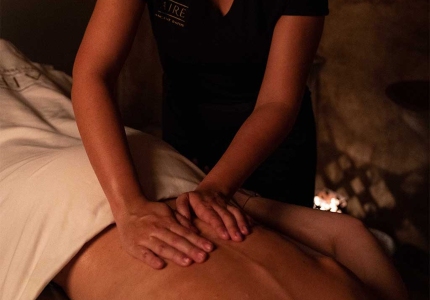Relaxing at home is more than just unwinding on the couch; it’s about creating a space and routine that supports deep relaxation and stress relief. In this article, we'll explore how to relax at home with effective techniques that you can easily incorporate into your daily life. From meditation and essential oils to setting up a calming environment, these home relaxation techniques are designed to help you find stress relief at home and recharge right from the comfort of your own space.
Why is it Important to Relax at Home?
In our busy lives, stress can take a toll on both mental and physical health, leading to fatigue, anxiety, and even weakened immunity. The importance of relaxing at home is high, and carving out time to relax at home can help counter these effects, creating a sanctuary for the mind and body. By focusing on stress reduction at home, you’re giving yourself a practical, accessible way to unwind and combat stress without needing to go elsewhere.
A tranquil environment at home encourages a better-quality sleep, enhanced focus, and even reduced blood pressure. Setting aside time for intentional relaxation can significantly boost overall well-being, promoting long-term mental and physical health.
Best Techniques to Relax at Home
Finding effective ways to relax at home can be simple and doesn’t require special equipment. Here are some tried-and-true methods to help you unwind:
- Meditation: Practicing meditation at home can reduce stress and improve mental clarity. Guided meditation apps or YouTube videos make it easy for beginners to get started, even with just 5-10 minutes a day.
- Breathing Exercises: Deep breathing helps lower cortisol levels, reducing stress. Techniques like the “4-7-8” method (inhaling for 4 seconds, holding for 7, exhaling for 8) are effective breathing exercises for relaxation and can be done anywhere.
- Aromatherapy: Essential oils like lavender, eucalyptus, and chamomile have calming effects that make them perfect for relaxation. Using a diffuser or scented candles brings the benefits of aromatherapy right into your home environment.
- Soft Music or Nature Sounds: Gentle, calming music or nature sounds can ease tension and promote relaxation. Many apps provide playlists for relaxation, helping create a spa-like vibe at home.
- Stretching and Gentle Yoga: Incorporating gentle movement helps release physical tension. Yoga or stretching exercises, especially before bed, are ideal for loosening muscles and calming the mind.
These best home relaxation techniques are simple yet effective ways to create calm and balance in your day.
Pixabay
Relaxing at Home vs. Going to a Spa: Which is Better?
While relaxation at home is convenient and cost-effective, visiting a spa offers a different level of specialized treatment. Here’s a comparison of the two options:
- Relaxing at Home: This approach allows you to unwind whenever it’s most convenient. With the right setup, you can create a soothing atmosphere tailored to your preferences. Relaxing at home is ideal for those looking to create a consistent relaxation routine without leaving the house.
- Spa Relaxation: Going to a spa can provide deeper relaxation with professional services like massages, facials, and hydrotherapy. These treatments are designed to target specific needs and can be more effective for addressing deeper muscle tension or skin concerns.
Both options have their benefits and combining them can be ideal. Spa treatments can offer rejuvenation on a deeper level, while a relaxing home environment allows for regular stress relief. Read more about the Benefits of spa treatments to see how spa visits complement at-home relaxation.
How to Create the Perfect Relaxing Environment at Home
Creating a calm and serene environment is essential for home relaxation. With a few simple adjustments, you can turn any room into a sanctuary:
- Dim Lighting: Using soft, warm lights or candles helps create a tranquil atmosphere, signaling to the brain that it’s time to unwind.
- Aromatherapy and Candles: The use of candles and essential oils for relaxation adds a comforting ambiance. Lavender, sandalwood, and eucalyptus are popular for their relaxing properties.
- Comfortable Seating: Invest in soft, supportive seating like a floor cushion or ergonomic chair where you can meditate or read comfortably.
- Declutter Your Space: A clutter-free environment helps clear the mind, making it easier to focus on relaxation.
- Soundscapes or Music: Try adding nature sounds or instrumental music to the background to create a peaceful environment that blocks out daily distractions.
Setting up a dedicated relaxation corner can make a significant difference in maintaining a stress-free mindset throughout the day. Using candles and essential oils for relaxation helps set the tone for calm and provides sensory enjoyment that can help you truly disconnect.
Relaxing at home can be transformative for your mental and physical well-being. By incorporating these simple home relaxation techniques into your routine, you can create a lasting sense of peace and balance. Whether you’re meditating, breathing deeply, or simply enjoying a candle-lit evening, each small act of relaxation contributes to a healthier, happier you.



